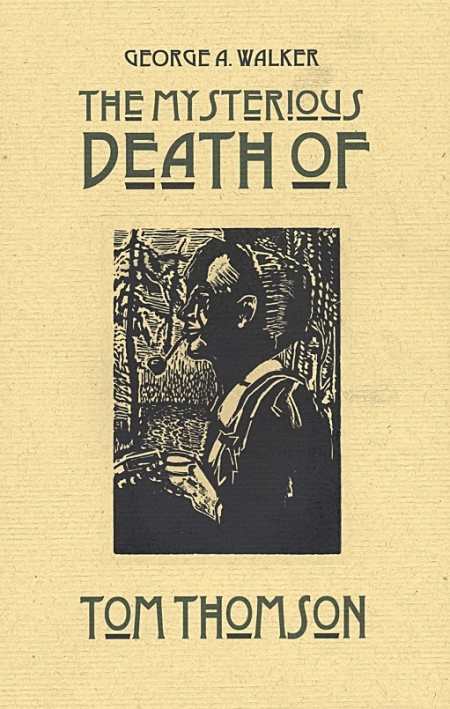The Mysterious Death of Tom Thomson
In this wordless experiment in woodcuts, textual content is lost, yet emotional content and a sense of pure, voyeuristic mood are gained.
Acclaimed woodcut artist George A. Walker uses a wordless chain of images to tell the story of the life—and still-unsolved death—of a Canadian artist in The Mysterious Death of Tom Thomson.
Thomson was an up-and-coming painter when he turned up dead near Canoe Lake in Algonquin Park, Ontario, in 1917. His death has been imagined or referenced in several works of fiction, poetry, and music over the years, with many theories proliferating on exactly how he died. A swimming accident, suicide, and murder have all taken turns as favored theories, and Walker chooses the latter for his version of events.
Despite the title of the book, Walker is not only focused on Thomson’s death, but instead uses a balanced approach in his 109 engravings, depicting images across Thomson’s entire life. This gives a sense of who Thomson was—a developing artist, still discovering who he was—and makes his premature demise that much more tragic.
Walker places a woodcut on every right-hand page, preceded by a blank page on the left, which allows each image to make its impression felt without competition. Without any guiding text, images can be lingered upon or quickly breezed past, but Walker exerts some control by including a telling detail that might demand closer examination, such as the repetition of an image on an army recruitment poster, or by the sudden, unexpected, and arresting explosion of anger and violence that accompanies Thomson’s death.
Walker’s woodcuts communicate Thomson’s sense of peace in nature, especially as contrasted with those images of the developing cities of Ontario: a locomotive at a station, for example, versus a later image of Thomson alone, carrying a canoe on his back.
By necessity, some information is lost in Walker’s wordless experiment—it’s sometimes hard to tell exactly what’s happening in a given woodcut, or how it relates to the continuing narrative, and there’s no way to completely grasp the cause of the argument that ends Thomson’s life. But if literal, textual content is lost, emotional content and a sense of pure, voyeuristic mood are gained. If the overall track of Thomson’s life seems unclear from one image, the next usually puts it in context and serves to clarify.
The Mysterious Death of Tom Thomson makes demands, and those unwilling or unable to participate fully may find Walker’s efforts not to their taste. But the uncertainty about the circumstances of Thomson’s death matches the uncertain element of reader interpretation of the images; an indication, perhaps, that Walker’s subject is uniquely well-suited to his wordless treatment.
Reviewed by
Peter Dabbene
Disclosure: This article is not an endorsement, but a review. The publisher of this book provided free copies of the book and paid a small fee to have their book reviewed by a professional reviewer. Foreword Reviews and Clarion Reviews make no guarantee that the publisher will receive a positive review. Foreword Magazine, Inc. is disclosing this in accordance with the Federal Trade Commission’s 16 CFR, Part 255.

